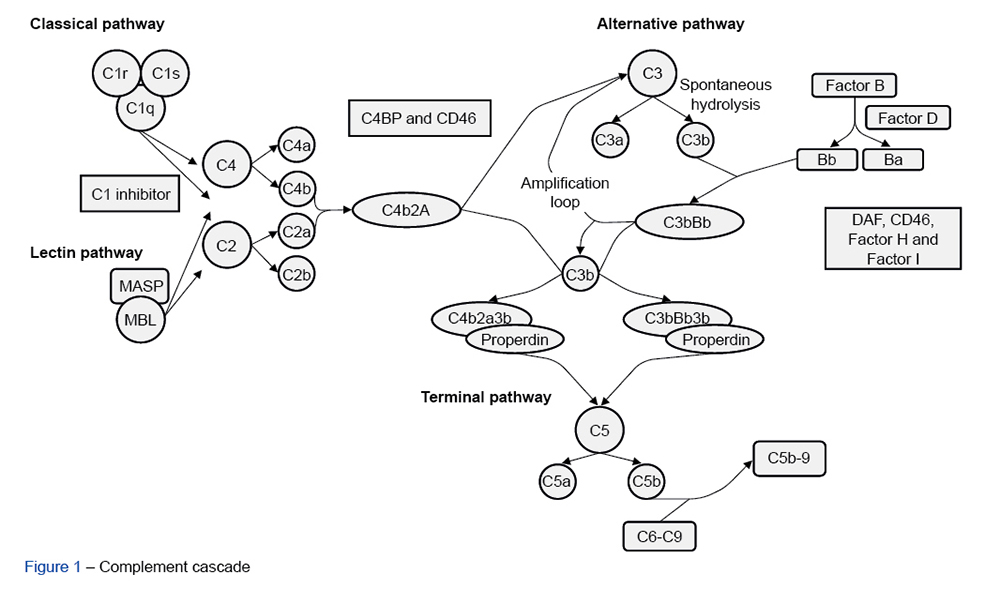SOCIAL MEDIA
Portuguese Medical Association's Scientific Journal

Introduction: Monoclonal gammopathy of renal significance (MGRS) is described as a hematologic condition characterized by nephrotoxic
monoclonal proteins produced by a non-malignant B-cell or plasma cell clone. Nevertheless, MGRS can cause serious renal lesions, leading to high morbidity. In C3 glomerulonephritis, a monoclonal protein can cause renal damage indirectly. Acting as an autoantibody, the protein cannot be detected in the kidney biopsy, promoting the dysregulation of the alternative pathway of the complement system.
Material and Methods: This non-systematic review was based on a comprehensive search in databases and scientific journals, such as PubMed, Nature Reviews Nephrology and Kidney International, including the terms ‘C3 Glomerulonephritis’ and ‘Monoclonal gammopathy of renal significance’. We review the pathophysiology, presentation, diagnosis, differential diagnosis and treatment of C3 glomerulonephritis associated with MGRS.
Discussion: With the increasing understanding of the complex interaction between monoclonal gammopathy and renal damage, such as C3 glomerulonephritis, it becomes clear that an early recognition is crucial, as Ig-directed therapy might improve outcomes. In this context, and in order to maximize the chance of a correct diagnosis, renal biopsy is mandatory to determine the exact nature of the lesion, and the severity of renal disease.
Conclusion: It is important to make an early diagnosis of MGRS-associated C3 glomerulonephritis in order to prevent not only the progression to a hematological malignancy, but also end-stage renal disease.